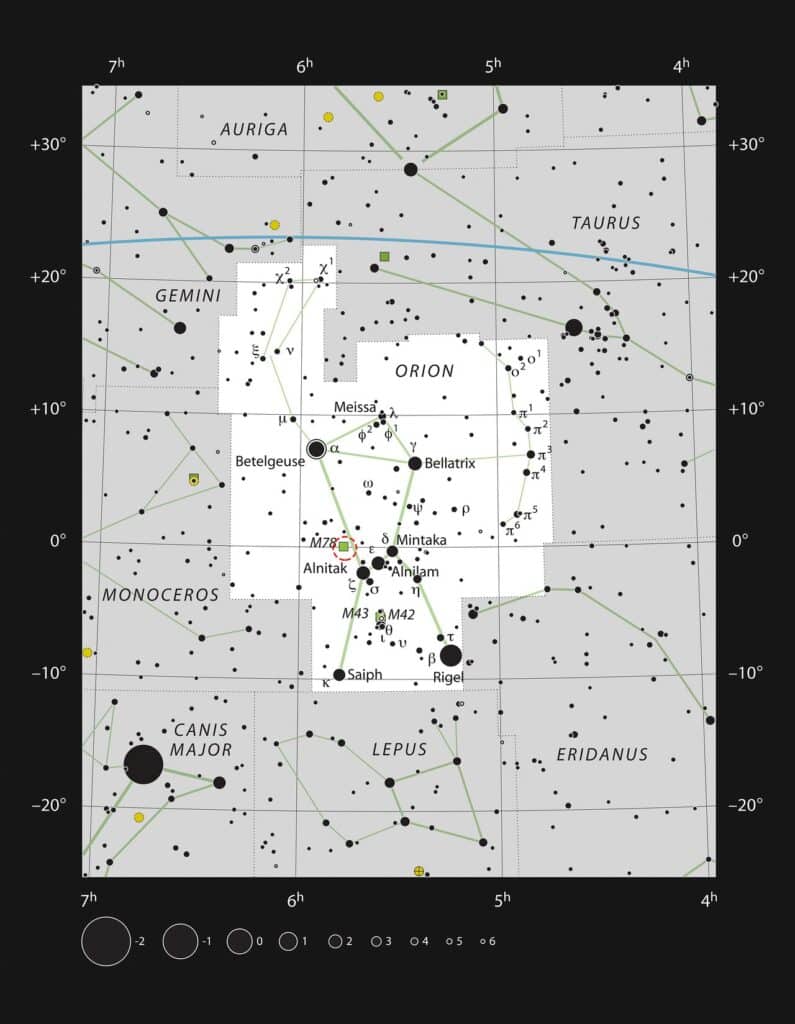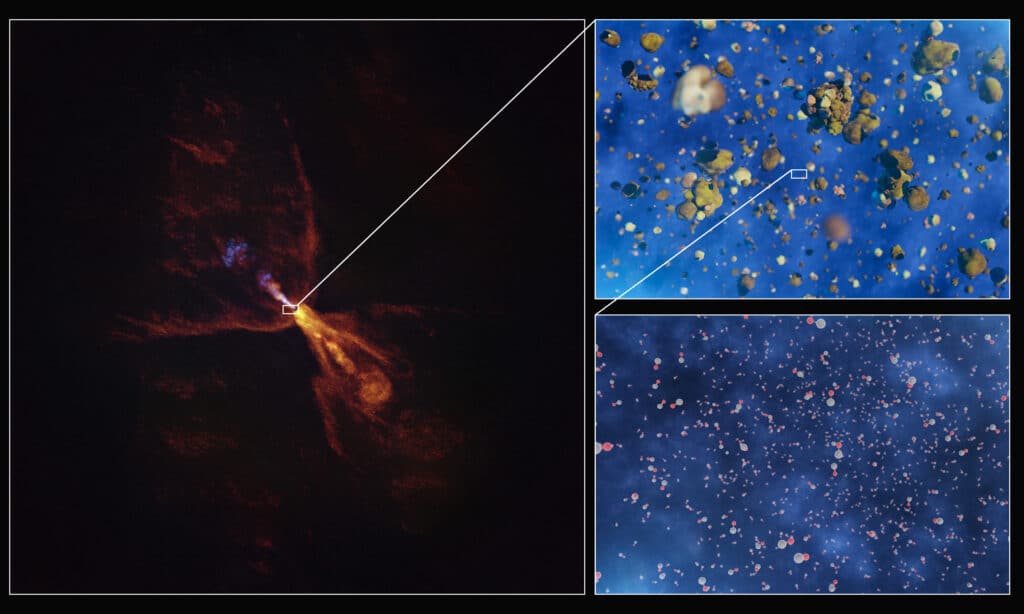Witnessing the birth of a new solar system for the first time
Astrobiologists and astronomers have announced a remarkable milestone: the first-ever direct observation of planets beginning to form around a distant star. This groundbreaking discovery was made possible by the combined powers of the ALMA telescope and the James Webb Space Telescope, giving us stunning insights into our origins.
Where did we look?
The solar system studied is very close to Orion’s belt, or, for us here in New Zealand, is right under the asterism called The Pot. Orion’s region is well known for stellar nurseries.

A Glimpse Back in Time
The stellar system, named HOPS-315, is located approximately 1300 light-years from Earth and is a stellar nursery similar to our own Solar System at its beginning. This discovery marks the earliest stage of planetary formation observed outside our Solar System, capturing when tiny specks of planet-forming minerals began to solidify.

Professor Melissa McClure of Leiden University, lead author of the study published in the journal Nature, describes the discovery as capturing the earliest known moment when planets start to form around a star other than our Sun. Co-author Merel van ‘t Hoff from Purdue University beautifully compares the image captured by the telescopes to “a picture of the baby Solar System,” giving scientists a real-time view of processes that shaped our own planetary neighbourhood billions of years ago.
Understanding Planetary Origins
The formation of planets begins with the condensation of solid materials from hot gases in a star’s protoplanetary disc. This disk is made up of rings of gas and dust orbiting young stars. In our own Solar System, evidence of the process is recorded within ancient meteorites containing crystalline minerals like silicon monoxide (SiO). Scientists date these meteorites to reconstruct the timeline of our own Solar System’s formation.
Around HOPS-315, researchers detected these same minerals just beginning to condense, confirming SiO in both gaseous and solid states. Edwin Bergin from the University of Michigan emphasised the unprecedented nature of this observation, stating that such an early stage of planetary birth “has never been seen before.”
Cosmic Analogues and Future Insights
ALMA’s precise observations pinpointed the mineral formation around HOPS-315 to a region comparable to our asteroid belt, underlining its similarity to the early Solar System. As co-author Logan Francis of Leiden University highlighted, seeing these minerals form exactly where we find similar substances in our Solar System offers potential for understanding our cosmic past.
Elizabeth Humphreys from the European Southern Observatory noted the significance of this discovery, pointing out how effectively ALMA and the James Webb Space Telescope complement each other in exploring these early cosmic stages.
Implications for Astrobiology
This discovery is significant for astrobiologists as observing the initial formation of planetary materials deepens our understanding of how essential elements for life and conditions emerge. By comparing systems like HOPS-315 to our own, researchers can better understand the factors leading to habitability and, potentially, the emergence of life.
Understanding the precise conditions and chemical processes involved in planetary formation allows scientists to determine how common Earth-like planets might be across the Universe. The identification of early planet-forming minerals also offers clues about the distribution of essential elements needed for life, such as carbon, oxygen, and silicon, providing astrobiologists with crucial data to refine models of life’s origins both on Earth and elsewhere.
This cosmic first not only improves our understanding of planetary science but also brings us closer to answering fundamental questions: How did life-supporting planets form, and could similar processes have fostered life elsewhere in the Universe?
More Information
To explore further details of this groundbreaking research, read the original study published in Nature: “Refractory solid condensation detected in an embedded protoplanetary disk”.
Stay tuned to Astrobiology.nz for more updates as we continue exploring.
